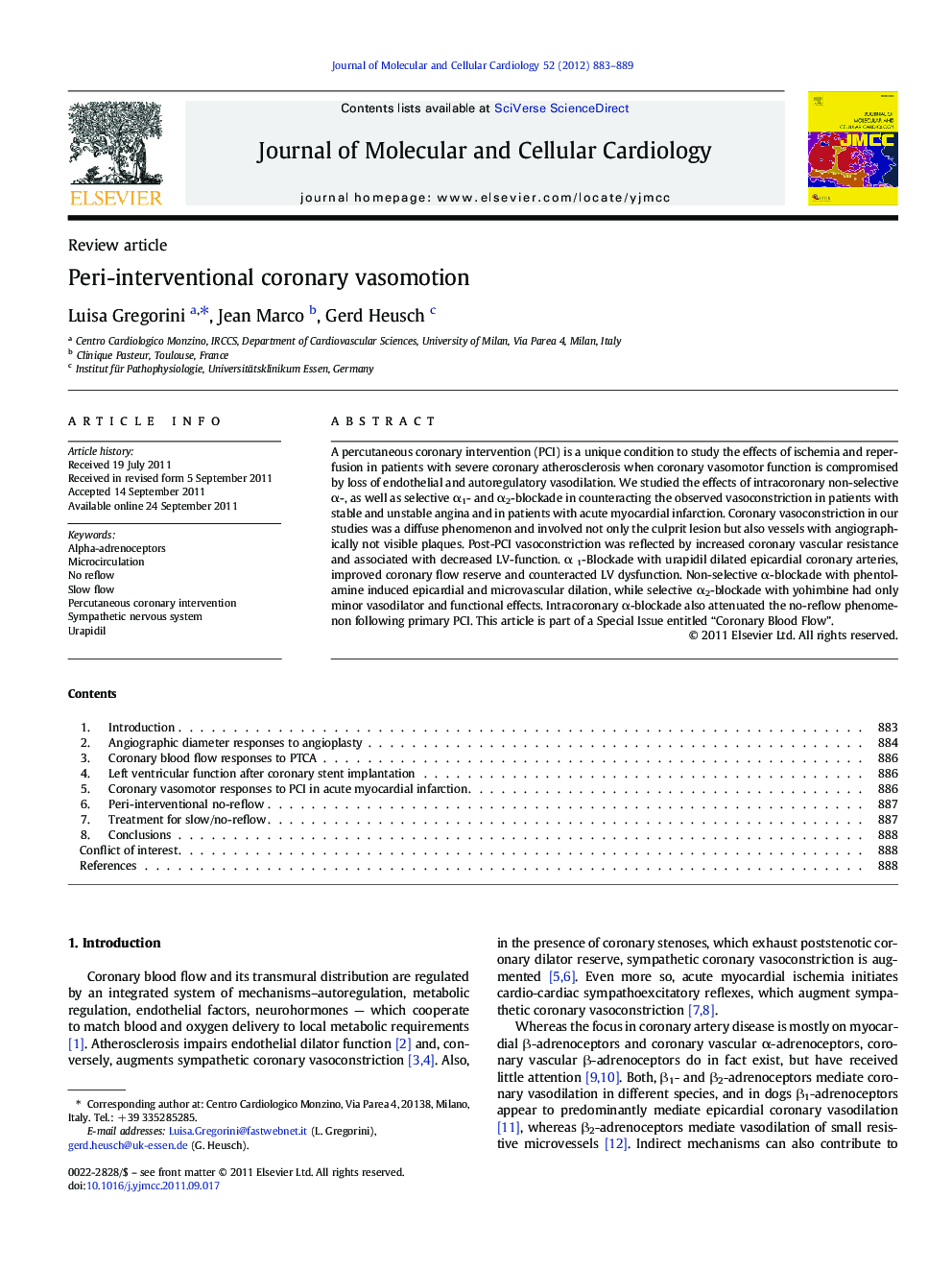| Article ID | Journal | Published Year | Pages | File Type |
|---|---|---|---|---|
| 2190661 | Journal of Molecular and Cellular Cardiology | 2012 | 7 Pages |
A percutaneous coronary intervention (PCI) is a unique condition to study the effects of ischemia and reperfusion in patients with severe coronary atherosclerosis when coronary vasomotor function is compromised by loss of endothelial and autoregulatory vasodilation. We studied the effects of intracoronary non-selective α-, as well as selective α1- and α2-blockade in counteracting the observed vasoconstriction in patients with stable and unstable angina and in patients with acute myocardial infarction. Coronary vasoconstriction in our studies was a diffuse phenomenon and involved not only the culprit lesion but also vessels with angiographically not visible plaques. Post-PCI vasoconstriction was reflected by increased coronary vascular resistance and associated with decreased LV-function. α 1-Blockade with urapidil dilated epicardial coronary arteries, improved coronary flow reserve and counteracted LV dysfunction. Non-selective α-blockade with phentolamine induced epicardial and microvascular dilation, while selective α2-blockade with yohimbine had only minor vasodilator and functional effects. Intracoronary α-blockade also attenuated the no-reflow phenomenon following primary PCI. This article is part of a Special Issue entitled “Coronary Blood Flow”.
► Percutaneous coronary interventions induce α-adrenergic coronary vasoconstriction. ► α-Adrenoceptor blockade attenuates coronary vasoconstriction and ventricular dysfunction. ► Nitroprusside is best suited to reverse a slow/no reflow phenomenon.
